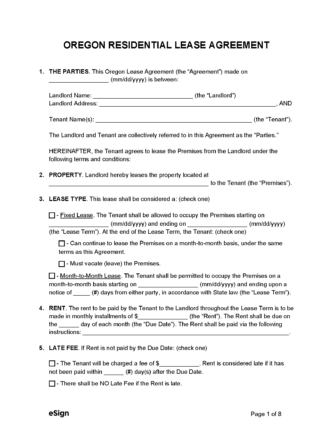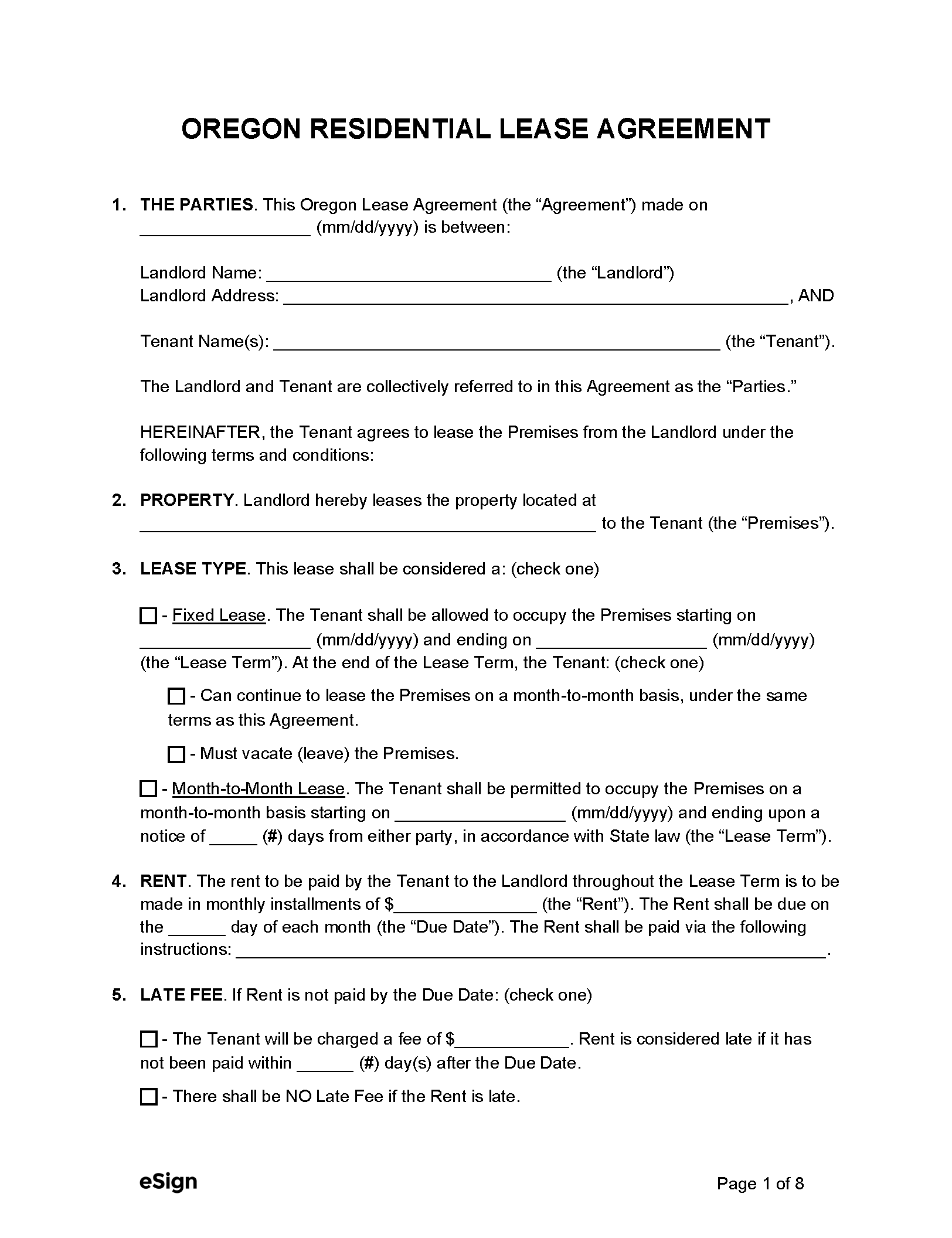Lease Agreements: By Type (6)
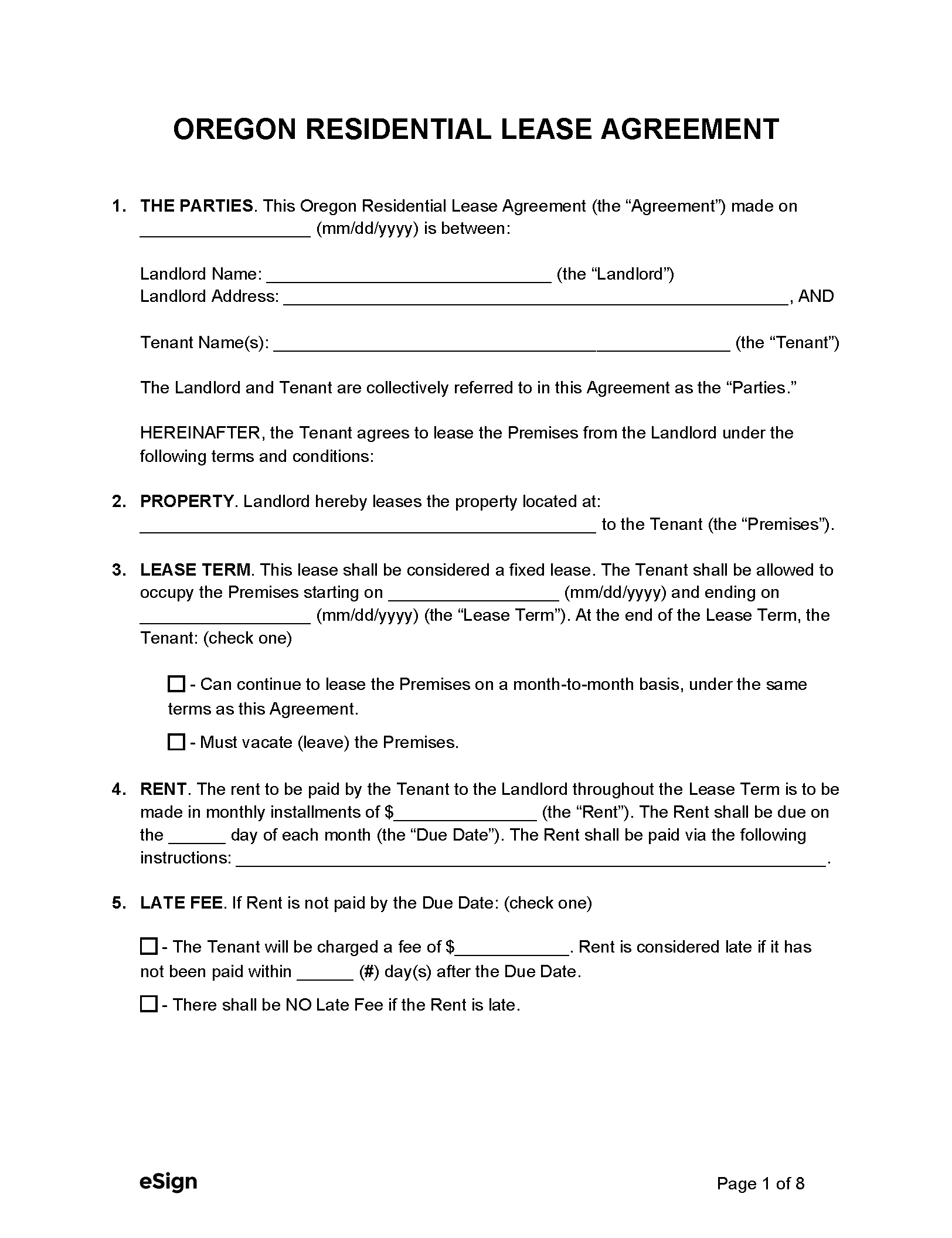 Standard (1-Year) Lease Agreement – A standard lease agreement is used to rent out residential property for a one-year term with monthly rent payments. Standard (1-Year) Lease Agreement – A standard lease agreement is used to rent out residential property for a one-year term with monthly rent payments.
Download: PDF, Word (.docx), OpenDocument |
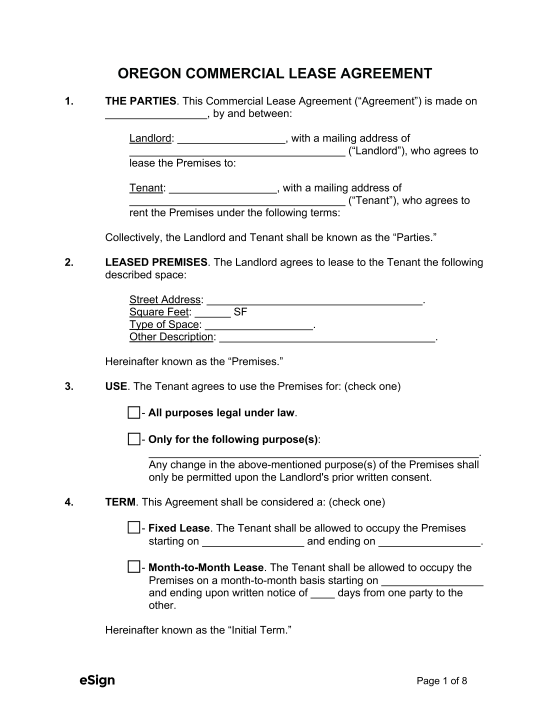 Commercial Lease Agreement – A commercial agreement allows landlords to lease their property to businesses. Commercial Lease Agreement – A commercial agreement allows landlords to lease their property to businesses.
Download: PDF, Word (.docx), OpenDocument |
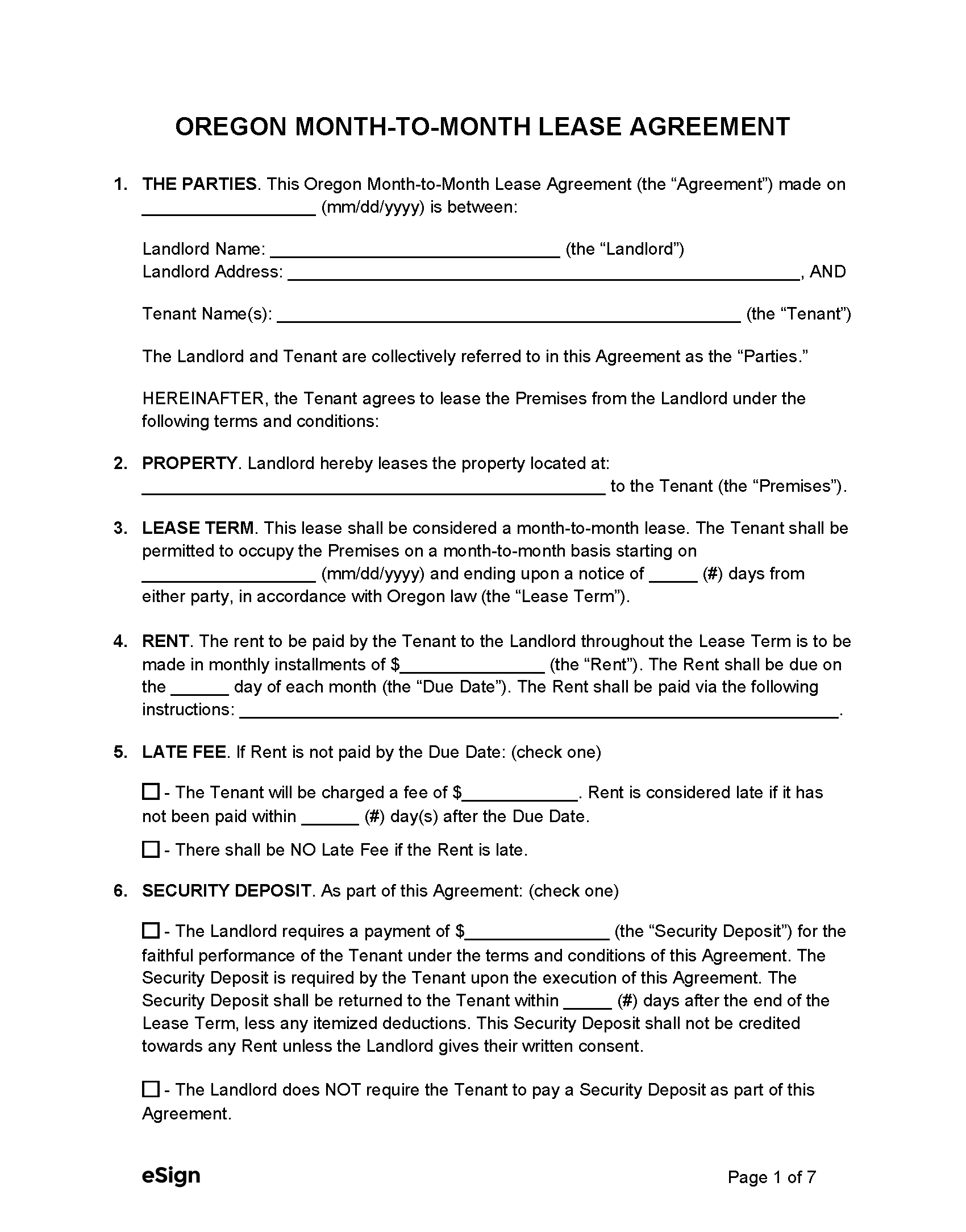 Month-to-Month Lease Agreement – A monthly lease that offers flexibility by not having a set term; however, it doesn’t provide the same security as a standard annual lease. Month-to-Month Lease Agreement – A monthly lease that offers flexibility by not having a set term; however, it doesn’t provide the same security as a standard annual lease.
Download: PDF, Word (.docx), OpenDocument |
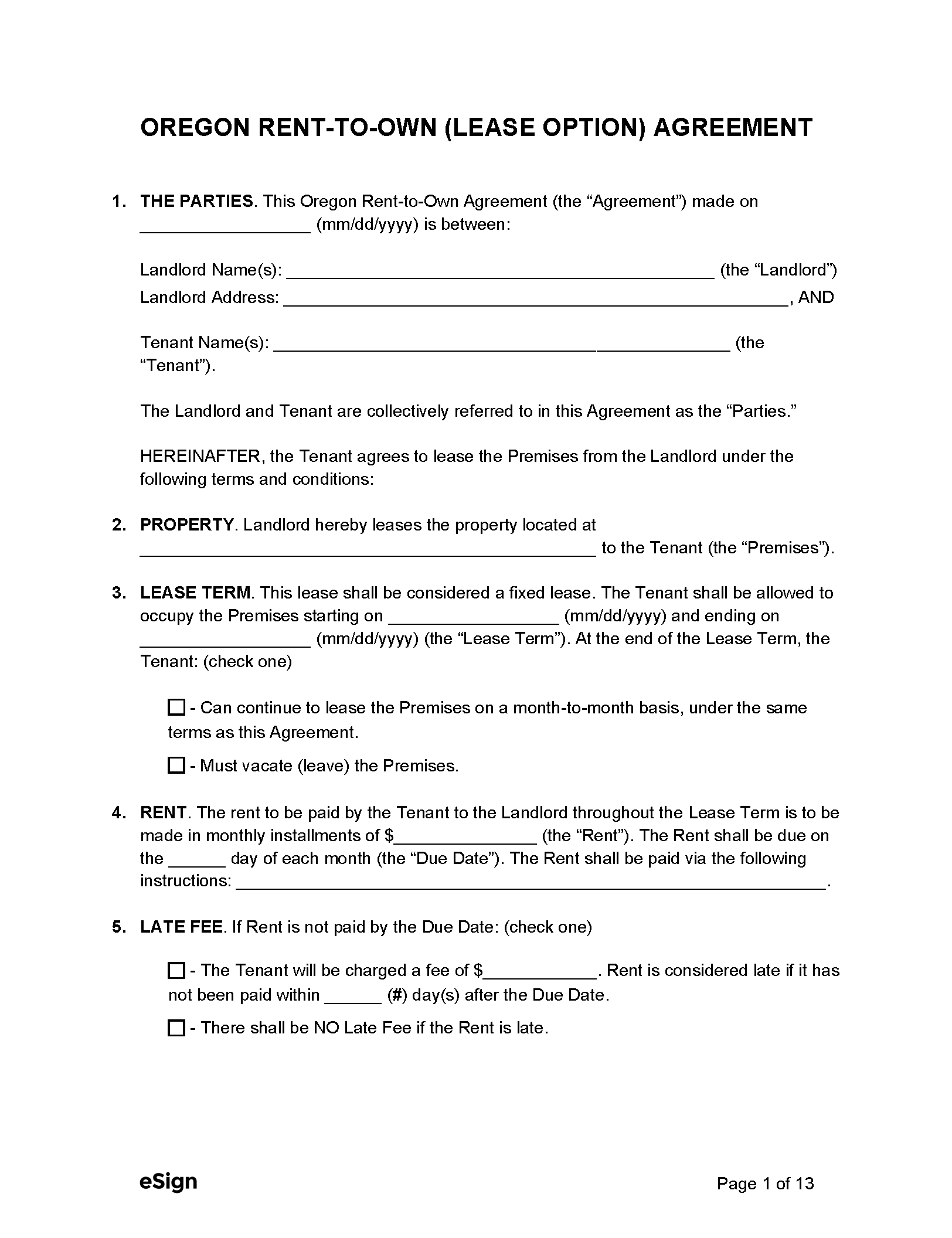 Rent-to-Own Agreement (Lease Option) – A rental agreement that gives the tenant the option to purchase the property. Rent-to-Own Agreement (Lease Option) – A rental agreement that gives the tenant the option to purchase the property.
Download: PDF, Word (.docx), OpenDocument |
 Roommate Agreement – A roommate agreement is used by individuals who share a residence to make firm rules regarding payments, housework, and behavior. Roommate Agreement – A roommate agreement is used by individuals who share a residence to make firm rules regarding payments, housework, and behavior.
Download: PDF, Word (.docx), OpenDocument |
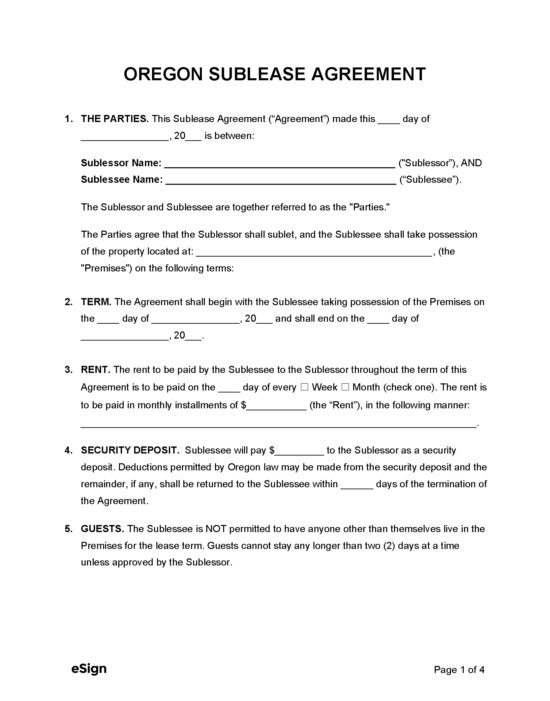 Sublease Agreement – Used by tenants to rent out space in their rental unit to a subtenant. Sublease Agreement – Used by tenants to rent out space in their rental unit to a subtenant.
Download: PDF, Word (.docx), OpenDocument |
Required Disclosures (9)
- 100-Year Flood Plain – The landlord must disclose in the lease agreement if a property is situated in a 100-year flood plain.[1]
- Carbon Monoxide Alarm Instructions – If the rental property has a carbon monoxide source, the landlord must provide a carbon monoxide alarm and instructions explaining how to test the device.[2]
- Condition Report (City of Portland Only) (PDF) – The landlord and tenant must create a condition report describing the state of the unit, noting any damages. If this can’t be done together, the landlord can make their report and share it with the tenant, who will have seven days to submit an addendum.[3]
- Disclosure of Legal Proceedings – If the rental unit is part of a property that contains no more than four units, the landlord must disclose any outstanding notice of default, pending foreclosure, or other proceedings against the property.[4]
- Identity Disclosure – The landlord must provide the tenant with the name and address of the property manager and that of the owner or an agent of the owner who is authorized to accept notices, demands, and service of process.[5]
- Lead-Based Paint Disclosure (PDF) – This disclosure informs tenants that the leased premises may contain toxic paint. This disclosure is required if the property was constructed before 1978.[6]
- Recycling Instructions – At least once a year, landlords must provide their tenants with instructions on the building’s recycling system. This disclosure applies only if the landlord owns five or more rental units on the same premises and is located within a city or county within an urban growth boundary.[7]
- Smoking Policy – The landlord’s smoking policy must be included in the lease agreement.[8]
- Utility and Service Disclosure – If any of the tenant’s utility or service fees will benefit the landlord or other tenants (by being delivered to anywhere outside of the tenant’s rental unit), this must be clearly stated in the lease agreement.[9]
Security Deposits
Maximum Amount ($) – There is no statutory limit to the amount a landlord can demand as a security deposit.
- City of Portland Only – If the tenant prepays the last month’s rent, the landlord can charge a maximum of half of one month’s rent as an additional security deposit. If the tenant does not prepay the last month’s rent, the landlord can charge up to one month’s rent for the security deposit.[10]
Collecting Interest – No state statute requires the landlord to collect interest on the security deposit for the tenant.
- City of Portland Only – If the landlord puts the security deposit in an interest-bearing account, that interest must be returned to the tenant minus an optional five percent administrative fee when the security deposit is returned.[11]
Returning to Tenant – The landlord must return deposits within 31 days from the date the tenancy is terminated and the tenant surrenders the property.[12]
Itemized List Required? – Yes, a written statement describing any deductions from the security deposit or prepaid rent must be given to the tenant within 31 days of the tenancy ending.[13]
Separate Bank Account? – No law requires a landlord to keep the security deposit in a separate bank account.
- City of Portland Only – Landlords in Portland must keep the security deposit in a bank account separate from their own.[14]
Landlord’s Entry
General Access – The landlord must give the tenant at least 24 hours’ notice before accessing their rental unit.[15]
Immediate Access – The landlord has the right to enter the rental unit without consent notice for emergency purposes.[16]
Rent Payments
Grace Period – Landlords must wait until rent is four days late before charging late fees.[17]
Maximum Late Fee ($) – A landlord may charge “reasonable” late fees in one of the following three ways[18]:
- A one-time, flat fee that is charged per rental period
- A daily fee that is up to six percent of the flat fee
- A fee equal to five percent of the monthly rent which is charged every five days
Bad Check (NSF) Fee – A landlord may charge a fee of $35 for a bad check.[19]
Withholding Rent – If the landlord fails to repair a minor habitability defect, such as leaky plumbing or faulty light switches, the tenant may repair it themselves and deduct it from the rent if the repair costs $300 or less.[20] If essential services are disrupted and the landlord does not remedy the issue after notification, the tenant may be excused from paying rent.[21]
Breaking a Lease
Non-Payment of Rent – The landlord may provide the following notices to quit depending on the circumstances[22]:
- A 10-day notice to pay or quit delivered on the 8th day rent is late
- A 13-day notice to pay or quit delivered on the 5th day rent is late
- A 72-hour notice to pay or quit delivered on the 5th day rent is late (week-to-week tenancy only)
Non-Compliance – A 30-day notice to quit for non-compliance may be given to inform tenants that they have 14 days to remedy a lease violation or be evicted.[23] A 10-day notice to quit may be served for a subsequent infraction without the option to cure.
Lockouts – Landlords risk legal consequences if they attempt to exclude or remove the tenant from the property without a court order.[24]
Leaving Before the End Date – If a tenant vacates before the end date, they will owe rent until the end of the lease period unless another tenant is found. The landlord has the responsibility to mitigate damages by attempting to rerent the unit.[25]
Lease Termination
Month-to-Month Tenancy – Landlords can terminate a month-to-month lease with a 30-day notice to quit during the first year of occupancy. After the first year, they can terminate with 90 days’ notice but only in certain circumstances. [26]
Unclaimed Property – The landlord must send a written notice to a tenant to ask them to pick up any property they left behind. The tenant must contact the landlord within five days if notified in person or eight days if notified by mail, and then pick up their belongings within fifteen days, otherwise the landlord may dispose of the property.[27]
Sources
- § 90.228(2)
- § 90.317(2)
- § 30.01.087(D)(1)
- § 90.310
- § 90.305(1)
- EPA/HUD Fact Sheet
- § 90.318(c)
- §§ 90.220(4), 479.305
- § 90.315(2)
- § 30.01.087(A)
- § 30.01.087(B)(1)
- § 90.300(13)
- § 90.300(12)
- § 30.01.087(B)(1)
- § 90.322(1)(f)
- § 90.322(1)(b)
- § 90.260(1)(a)
- § 90.260(2)
- § 30-701(5)
- § 90.368
- § 90.365(1)
- § 90.394(1)
- § 90.392(5)(a)
- § 90.375
- § 90.410
- § 90.427(5)
- § 90.425(8)
